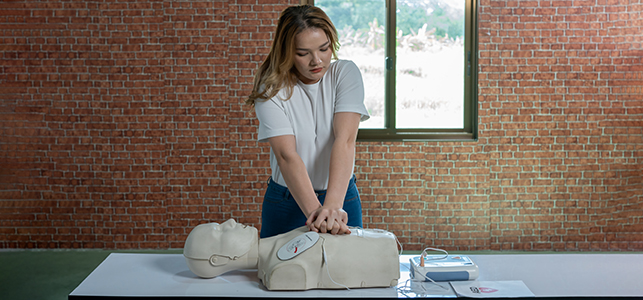Children's Emergency Department is now located in Children's Tower: 1001 E. Marshall Street.
Learn more
Would you know what to do if the person next to you experienced sudden cardiac arrest? When the heart stops unexpectedly, a few minutes can make all the difference. Dr. John Phillips, pediatric cardiologist and electrophysiologist, offers step-by-step guidance to help you save a life.
“If a person goes four minutes without CPR or defibrillation [shocking a heart back into normal rhythm] during a sudden cardiac arrest, their chances of survival are slim – less than 10 percent,” said Dr. Phillips. “You never know when or where this medical emergency may happen, which is why it’s important for everyone to be prepared. Take a few moments now to brush up on how you can most effectively jump into action if needed.”
Imagine you’re out shopping, at a neighborhood gathering or somewhere else in the community and you see someone collapse. Don’t delay.
An AED is a sophisticated, yet easy to use device that analyzes the heart’s rhythm and delivers an electrical shock when necessary to restore normal rhythm. AEDs are intended for anyone in the public, not just those with medical expertise, to use. If one is available, don't be afraid to use it in those essential minutes before emergency teams arrive.
The AED will give you simple voice instructions on what to do, starting with placing the pads with sensors/electrodes on the person’s chest. It will then either automatically provide a shock or instruct you to press a button to deliver the shock at an appropriate time.
AEDs are becoming more commonplace throughout the community. A law went into effect last year requiring all Virginia schools to have them. You’re also likely to find them in offices, airports, shopping centers, places of worship, gyms and other public locations – often near the entrance or in another easy to find spot. Look around for AEDs next time you’re out and about.
You won’t hurt someone by using an AED – but your confidence and quick response could save their life.
Dr. Phillips and his team run the Project ADAM affiliate in Virginia, helping schools ensure they’re prepared to care for students, faculty, staff and visitors who may experience a sudden cardiac arrest on campus.